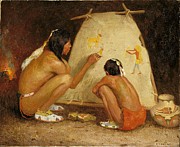Eanger Irving Couse
Paintings








Evening Clouds Over the Arizona Desert



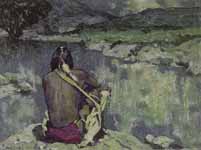
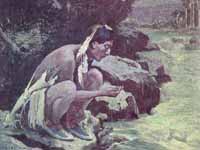
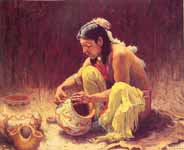
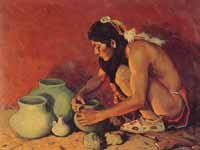
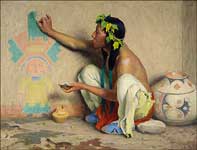
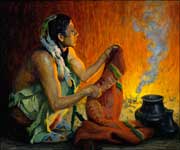

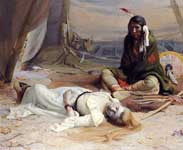
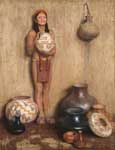
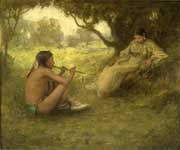
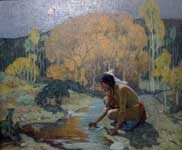


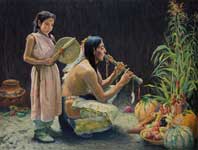
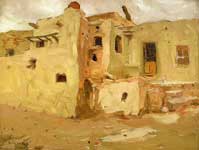
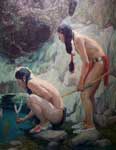
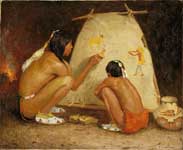













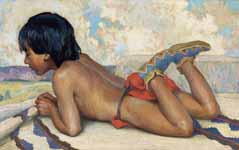
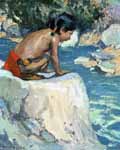
Indian Boy seated on a Rock above a Stream





Indian seated with Flute (Autumn)




Indian Woman with Child in a Blanket


















Peasant Girl Seated on Shocks of Grain









Study for Flute Player with his Sons (Indian Campfire)

































Fine Art Prints | Greeting Cards | Phone Cases | Lifestyle | Face Masks | Men's , Women' Apparel | Home Decor | jigsaw puzzles | Notebooks | Tapestries | ...
Eanger Irving Couse (September 3, 1866 – April 26, 1936) was an American artist and a founding member and first president of the Taos Society of Artists. He is noted for paintings of Native Americans, New Mexico, and the American Southwest. His house and studio in Taos have been preserved as the Eanger Irving Couse House and Studio—Joseph Henry Sharp Studios, which is listed on the National Register of Historic Places and the New Mexico Register of Cultural Properties.
E. IRVING COUSE
In His Studio
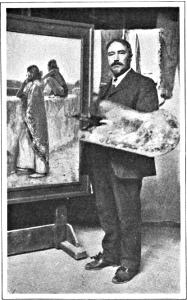
Early life and education
Couse (pronounced to rhyme with "house"[1]) was born to a farming family in Saginaw, Michigan. As a boy, he started drawing members of the Chippewa tribe who lived nearby. He attended local schools as a child and continued to work at art.
Couse left Michigan for professional art studies at the Art Institute of Chicago and the National Academy of Design, New York. He went to Paris, where he studied at the École des Beaux-Arts and Académie Julian under William-Adolphe Bouguereau. He lived in France for 10 years, painting mostly landscapes of the Normandy coast. Between 1893 and 1896, he lived at the Etaples art colony,[2] where he painted its streets and fisher folk, including Coastal Scene, Etaples.
THE HOUSE OF E. IRVING COUSE
At Taos, New Mexico
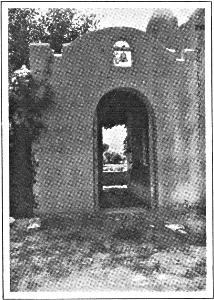
Artistic career in the United States
After his return to the United States, Couse first lived in New York. He spent time in Taos, New Mexico during the summers. At the turn of the 19th century, the Southwest, and New Mexico in particular, attracted numerous artists and writers because it remained untouched by national expansion efforts dictated by the American policy of Manifest Destiny. The artists and writers of this era wanted to capture the last vestiges of the Old West before it disappeared altogether. During his time in New Mexico, Couse studied and painted the lives and culture of the Taos Indians, a Pueblo tribe. He began to show his paintings of Native American life and earned his first solo show in 1891.
In 1911 Couse was elected to the National Academy of Design.[3] He also became active in the Taos art colony. In 1915, Couse was one of the six founding members of the Taos Society of Artists, and was elected first president. Another founding member was the artist J. H. Sharp, who adapted a chapel near Couse's house as a studio. Later Sharp built a combined house and studio on the land. The adjacent properties are recognized jointly as the Couse/Sharp Historic Site, and are preserved and operated by the Couse Foundation.
Among Couse's works in public galleries are Elk-Foot of the Taos Tribe[4] (Smithsonian American Art Museum); Taos Pueblo - Moonlight[5] (New Mexico Museum of Art); The Forest Camp (Brooklyn Museum of Art); The Pottery Maker (Two Red Roses Foundation); The Tom-Tom Maker (Lotos Club, New York); Medicine Fires (Montclair Gallery, New Jersey); and Shapanagons, a Chippewa Chief (Detroit Museum of Art).[3]
Of these works, Elk-Foot of the Taos Tribe, painted in the summer of 1909, is considered Couse's masterwork. The painting was purchased for the United States national art collection by the well-known art collector William T. Evans and is now displayed in the collections of the Smithsonian American Art Museum. Elk-foot, whose anglicized name was Jerry Mirabal, began posing for Couse in 1907 and was one of the painters favorite subjects because of his "physical beauty and ideal features."[6]
Early works
Couse's The Captive was shown in 1891 at his first solo exhibition, held at the Portland Art Association in Oregon, and then at the Paris Salon of 1892. This large, "salon size" painting was the first Native American subject by Couse, who later achieved fame in the United States for his paintings of the indigenous peoples of New Mexico. In 1991, The Captive was included in the National Museum of American Art exhibition entitled The West as America, which created controversy by its curatorial interpretation of the artists' meanings and intents. Art historians have explored the painting's racial, sexual, and social motives in the context of American society at the time.[7]
In 1899, Couse exhibited three paintings at the Boston Art Club: A Cayuse Indian (oil), Maternity (oil), and Yakima Encampment (oil). At the time, Course listed his current address as the Van Dyck Studios, 939 8th Avenue, New York City.
Later works
The Kachina Painter (1917)
Mending the War Bonnet
Making Pottery (awarded $500 National Academy of Design Carnegie Prize)
Roasting Corn (1904)
Rushing Water (1912)
Twilight, Taos Pueblo (1913)
Taos Canyon Camp
Taos Pueblo - Moonlight (1914)[8]
The Kachina Painter (1917)
Legacy and honors
His works won recognition and numerous awards from such institutions as the following: the Paris Salon, the Art Institute of Chicago, the National Academy of Design (Altman prize, 1916); and the Salmagundi Club (Isidor prize, 1917). He was awarded the Lippincott prize from the Pennsylvania Academy of Fine Arts (1921). He received awards from the American Exposition, Buffalo; the Boston Art Club, the Corcoran Gallery, and the Panama Pacific International Exposition in San Francisco (silver medal, 1915). His works are held in many museums in the United States and around the world.
Two buildings he used as studios are part of the Eanger Irving Couse House and Studio—Joseph Henry Sharp Studios listed on the National Register of Historic Places and the New Mexico Register of Cultural Properties.[9] This is one of 30 sites recognized as an "Historic Artist's Home and Studio Associate Site" by the National Trust for Historic Preservation.[9] In 2001 the Couse Foundation was formed to restore and preserve the properties. It operates the historic site of the two artists and offers scheduled tours.
Death
Couse's marker at Sierra View Cemetery
Couse died in Albuquerque, New Mexico in 1936. He is buried at Sierra View Cemetery in Taos.[10]
Notes
Funk, Charles Earle (1936). What's the Name, Please?. Funk & Wagnalls.
"Eanger Irving Couse / Biography". Couse-Sharp.org. Couse Foundation.
"Couse, E (anger) Irving (1866 – )". New International Encyclopedia 6 (2nd ed.). Dodd, Mead. 1914. p. 190.
Couse, Eanger Irving. "Elk-Foot of the Taos Tribe". Smithsonian American Art Musesum. Smithsonian Institute. Retrieved 2012-08-10.
"Related: Taos Pueblo - Moonlight". Searchable Art Museum. New Mexico Museum of Art. Retrieved 2013-07-09.
Leavitt, Virgina Couse (1991). Eanger Irving Couse: Image Maker for America. Albuquerque, NM: The Albuquerque Museum.
Komanecky, Michael K. (2002). Phoenix Art Museum: Collection Highlights. New York: Harry N. Abrams, Inc. p. 60. ISBN 978-0810932456.
"Taos Pueblo - Moonlight". New Mexico Art Tells New Mexico History. New Mexico Museum of Art. Retrieved 2014-01-16.
"The Couse-Sharp Historic Site". Couse-Sharp.org. Couse Foundation.
Eanger Irving Couse at Find a Grave
----
Fine Art Prints | Greeting Cards | Phone Cases | Lifestyle | Face Masks | Men's , Women' Apparel | Home Decor | jigsaw puzzles | Notebooks | Tapestries | ...
----
Artist
A - B - C - D - E - F - G - H - I - J - K - L - M -
N - O - P - Q - R - S - T - U - V - W - X - Y - Z
Retrieved from "http://en.wikipedia.org/"
All text is available under the terms of the GNU Free Documentation License


